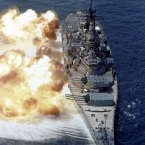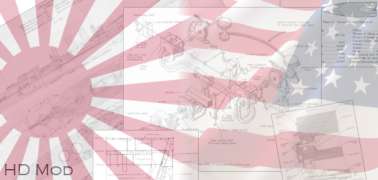JWE
Posts: 6580
Joined: 7/19/2005
Status: offline

|
Ok, enuf with the pm’s. I’m not ignoring anybody, just getting tight with Juan. Am astonished, and quite pleased at the number of people who actually run Nathan Oakun’s program. Am impressed. For ya’ll, here’s my nitty gritty. Juan’s is a skoosh different, because his program is different, so no worries, this is just my side. So for them of you who can play with the math:
Use FACEHARD, v 6.8. It’s DOS and a bitch to input and resolve, but works for me, who is an old legacy fart anyway. Heck, I can still use a slide rule and know what a logarithm is. Some inputs are:
8”/55, AP Mk-19/1, 260lb shell, 216lb body, muzzle velocity 2800 fps
8”/55, AP Mk-19/4, 260lb shell, 203lb body, muzzle velocity 2800 fps
8”/55, AP Mk-21/4, 335lb shell, 268lb body, muzzle velocity 2500 fps
6”/47, AP Mk-35/1, 130lb shell, 107lb body, muzzle velocity 2500 fps
6”/47, AP Mk-35/9, 130lb shell, 100lb body, muzzle velocity 2500 fps
203/50, AP 91-T, 277lb shell, 263lb body, muzzle velocity 2750 fps
155/60, AP 91-T, 123lb shell, 117lb body, muzzle velocity 3015 fps
For the ballistics program that calculates striking angle and velocity, ogive crh and bourelette are directly from OP 1664 (TM 60A-2-1-11/12). Assumed best case (same) values for Japanese shells (everybody’s equal in my eye). Ballistics coefficient (BC) is assumed 1 to begin, and curves normalized to reported data, to extract effective BC, then re-ran with ‘e’BC. All atmospherics are standard, and best case; 750 mm HG, 15° C, no cross perturbations, and ignored altitude atmospheric density differential for everybody.
Made best case assumptions for obliquity. 90° target aspect, no yaw or tumbling; straight forward strike angle.
Used the ‘Effective’ naval ballistic limit; where things penetrate with the body and fuse in condition to operate. There are many other penetration limits that look at different penetration parameters. My personal choice is EBL, and I use that for all results (my consistency metric).
Am trying to figure out how to do my strike angle/strike velocity tables for these guns so they look nice. Might just have to dump the wretched beasties as an excel file in a zip.
Am doing a massive data dump for Juan. Got his NaAB program and am running my stuff with it. We should (hopefully) get some congress on this stuff.
_____________________________
|
 Printable Version
Printable Version
















 so unfair!
so unfair! 



 New Messages
New Messages No New Messages
No New Messages Hot Topic w/ New Messages
Hot Topic w/ New Messages Hot Topic w/o New Messages
Hot Topic w/o New Messages Locked w/ New Messages
Locked w/ New Messages Locked w/o New Messages
Locked w/o New Messages Post New Thread
Post New Thread